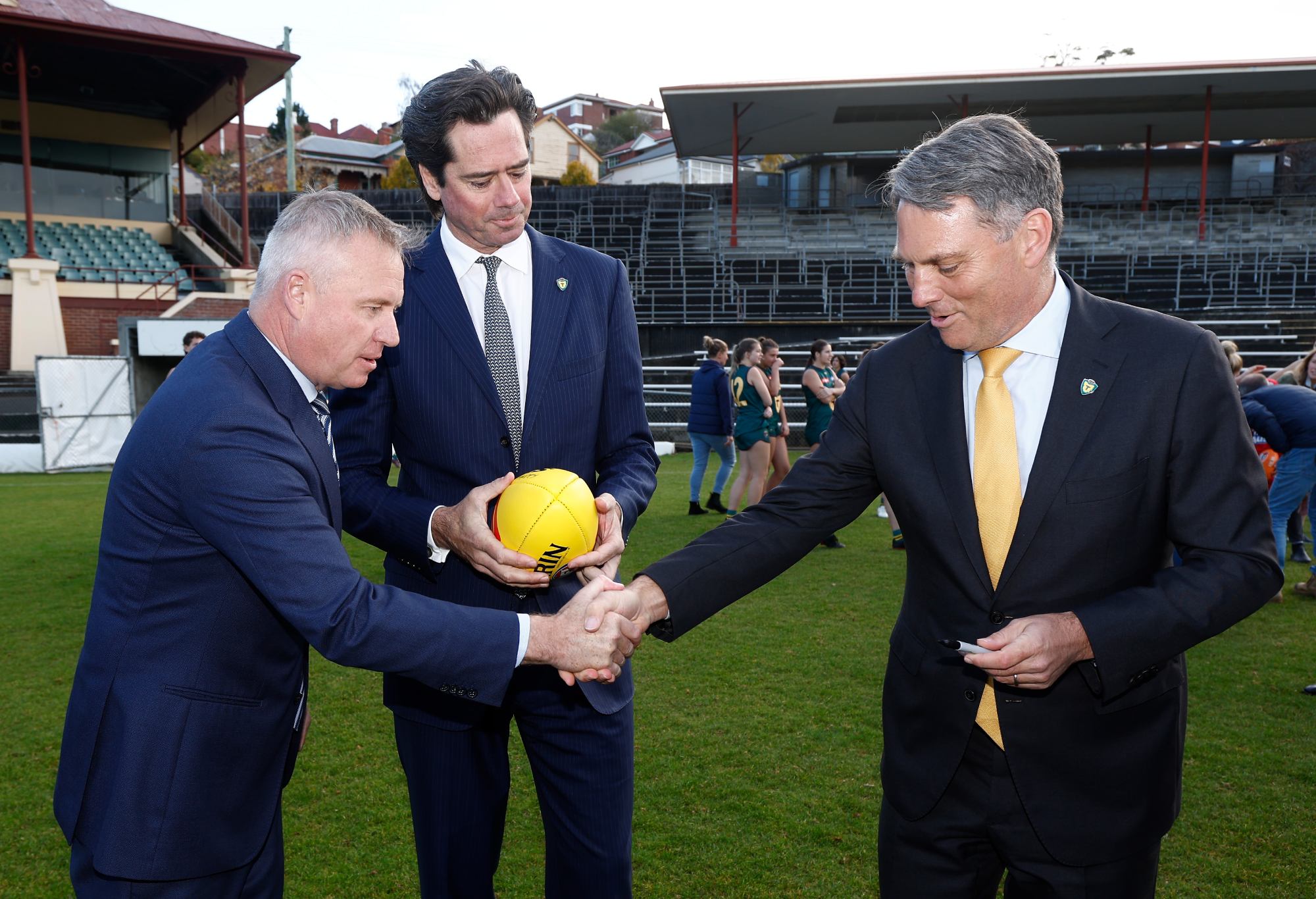The new Tasmanian AFL franchise needs to succeed financially without truckloads of support from the game’s administration

The AFL, the federal government, and the Tasmanian state government have all supported the concept of getting a team on the Apple Isle and playing in the top-tier competition.
But even if they do get the stadium built the presumed ‘Devils’ have to make money on their own and the AFL would ideally like it to be faster than the dawdling pace of the Suns and GWS’ slow march to profitability and growth.
The Tasmanians will be expected to hit the ground running. I believe that attendance, membership, and sponsorship will have to be the bones on which a successful future in the AFL will be built for the Tasmanians.
Attendance
The best way to make the Tasmanian team profitable in the long term is to get people to go to the games – it sounds simple I know.
Unfortunately, they might be fighting this battle with one hand tied behind their backs. The problem is the four games that will be played at UTAS Stadium in Launceston. I am not saying the people of Launceston don’t deserve to see their team but going to the footy is a habit, and habits need time and opportunity to form.
The team as planned currently will play seven times in 24 weeks in Hobart and four in Launceston hard to make that a weekly winter ritual.
The saving grace in the short-to-medium term will have to be away fans making a winter weekend away in Tassie, and allowing enough time for the habit of ritually attending games to develop in fits and starts.
North Melbourne averaged just over 20k home attendances and made just under $2 million in gate receipts in 2023.
With the proposed Macquarie Point stadium to have a seating capacity of 23k and UTAS at 19.5k, this would be about the best-case scenario for the Tasmanians so the club cannot be built on attendance alone, it will need strong off-the-field financials as well.
Tasmanian Premier Jeremy Rockliff, AFL chief Gillon McLachlan and Deputy PM Richard Marles. (Photo by Michael Willson/AFL Photos via Getty Images)
Memberships
Whilst we all know that membership numbers are not beyond criticism, they remain the best determiner of an AFL club’s future financial health.
An ambitious goal I would set for the team would be to match the average traditional AFL states for the percentage of the state population that are members of 9.78 per cent.
Crucially this whole member base does not have to come from the home state just total members are roughly equivalent to 9.78 per cent of the population, in Tasmania’s case 51,084 members.
With only a touch over 42k seats available to people across both stadiums in Tasmania and neither stadium getting a full allotment of 11 home games, I would say that they’re unlikely to get all the members they need in Tasmania alone.
Victoria will be the key to reaching this goal as it is the only market besides Tasmania that they will be likely to play in more than once a year.
Having done some back-of-the-napkin math as hard numbers are extremely hard to come by for interstate migration I would estimate between 2008 and 2023 between 35k-50k Tasmanians moved to Victoria based on ABS data.
Getting these Tasmanian expats to buy interstate memberships will be vital. If they can get 30k members on the home island and 20k on the mainland plus attending games and spending money the club will be well on its way to sustainability.
Sponsorship
This is the Tassie team’s trump card. Already off the bat eight million dollars a year is going from the Tasmanian government to North and Hawthorn.
It can instead go straight to the team, plus any extra the state government feels like pouring in.
On top of that, there is a not insubstantial list of companies that would probably be happy to pay overs for sponsorship rights to support the home team and show off their connection to the state, on top of the national brands that would naturally want some AFL exposure.
University of Tasmania Stadium in Launceston. (Photo by Dylan Burns/AFL Photos via Getty Images)
My shortlist includes MyState (a Tasmanian-based bank currently expanding into the mainland), Cadbury, Tassal, Federal Group (casino, hotel and hospitality chain based in Tasmania) Spirit of Tasmania, and an outside chance of MONA getting involved also.
With four of these companies already having a history of sponsoring Tasmanian sports teams, odds are good they’d jump at sponsoring an AFL team and give the team an astoundingly strong hand with sponsorships from the get-go.
Essentially, Tasmania will have to contend with the problems of three different styles of teams that already exist in the AFL.
Firstly, courting a substantial Victorian-based membership cohort in the vein of Sydney and Brisbane, as well as managing geographically and temporally separated home games like Melbourne teams who sold their home games to Tasmania in past have had to.
Sports opinion delivered daily
Then there are the general challenges of extra travel that are incumbent on all non-Victorian teams in the AFL. But, they will have a lot of cash to get started solving those problems.
There is no doubt the new franchise will need good management and sound planning before a ball is even bounced.
Good luck Tasmania and welcome to the AFL.
